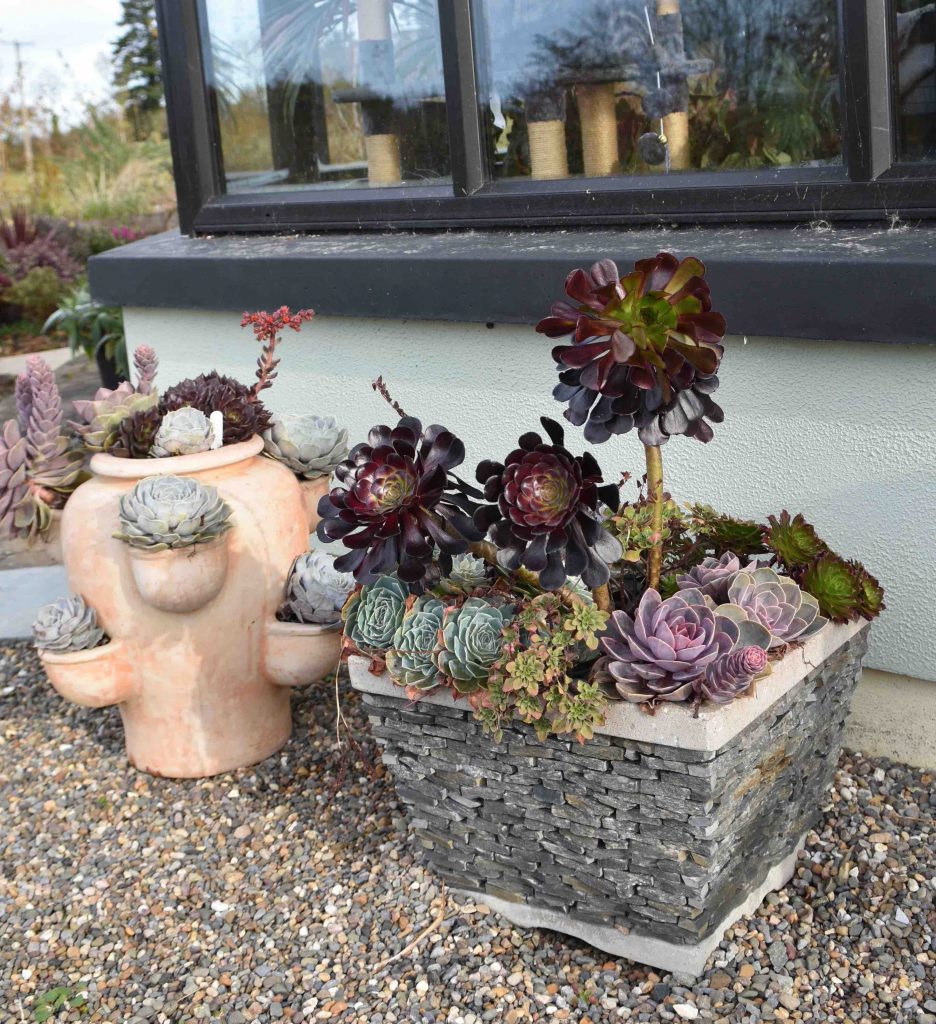
We have had a cold start to winter and it may have caught some of us out! I managed to protect most plants or bring them into the greenhouse but a few plants had a nasty shock.
In the past few years succulents have become very popular, in part because they are easy to grow and some tolerate drought.
Although we refer to them all as succulents, they come from various parts of the world and they vary in their hardiness. Some will withstand a little frost, some are reliably hardy and others are decidedly unable to survive winter frost.
The photo above shows some of my pots containing echeverias (some of which tolerate a little frost) and black aeoniums, which need protection from freezing.
We will start with the hardy succulents. Only some sedums. usually grown in rock gardens, and sempervivums (houseleeks) are reliably hardy.
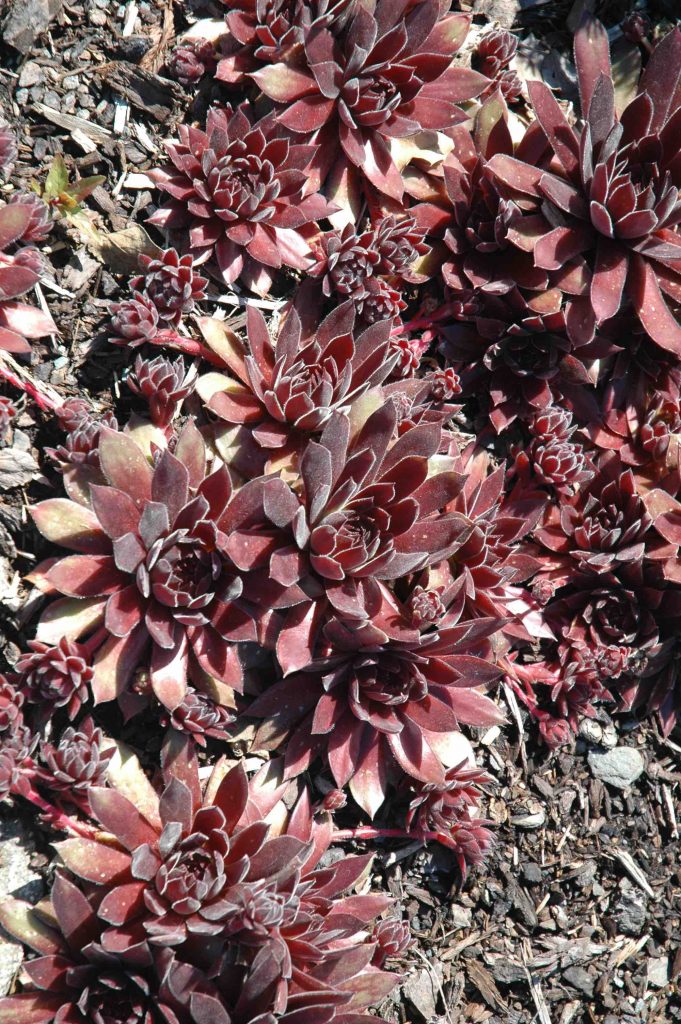
Sempervivums are European in origin, where they grow in the Alps, among other places, and they are completely hardy. There is a wide range of foliage colours and all form low clumps that cover the soil. Most have spikes of pink or red flowers, about 20cm high. Once a rosette has bloomed it will die but lots of small ones are produced around it to form a dense mat of foliage. All need full sun and will survive with little water in summer. They are perfect for pots where they don’t get much watering. If you don’t have facilities to protect plants from cold in winter these are the ones to choose.
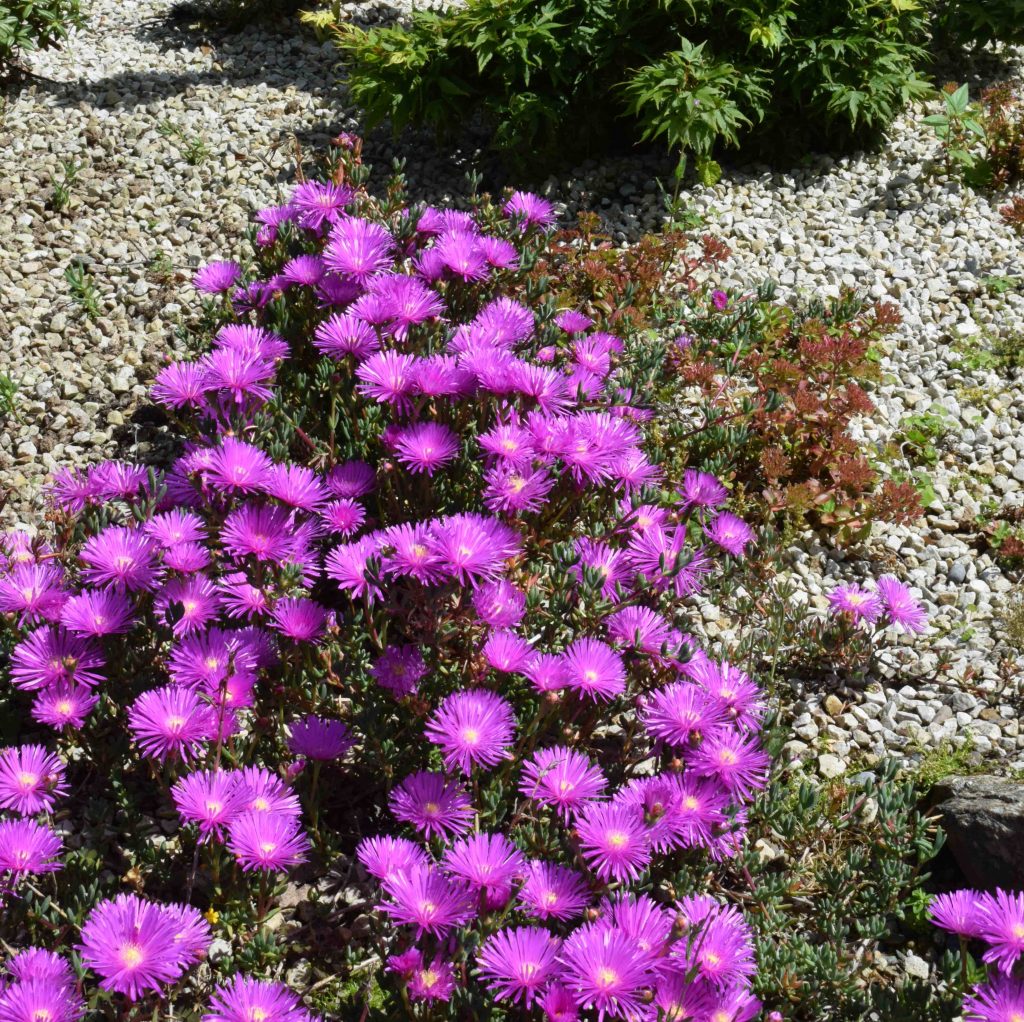
Lampranthus and delosperma are from South Africa and are grown primarily for their vibrant flowers. These have a satin texture and only open in bright sunlight. They vary in hardiness but most will tolerate some frost. They need a well-drained soil and are perfect for rockeries. pots and dry banks.
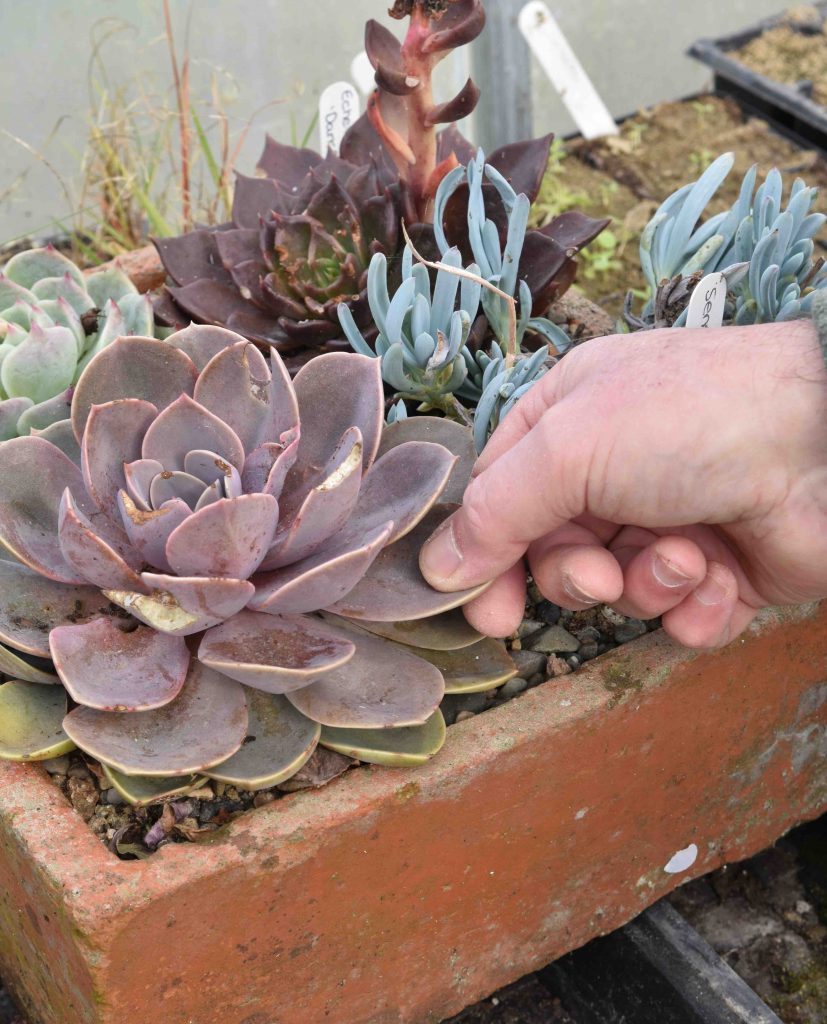
Echeverias vary in hardiness too and are best treated as summer plants that can be put on the patio and kept in a greenhouse in winter. They can also be kept on a sunny windowsill in winter . It is a risk leaving them outside in winter but you can propagate them quite easily from leaf cuttings, taken summer. If you cannot put them inside in winter then move the pots to beside the house where they will be kept dry under the eaves. You can cover them with some fleece in cold periods but don’t leave this on too long because they need bright light.
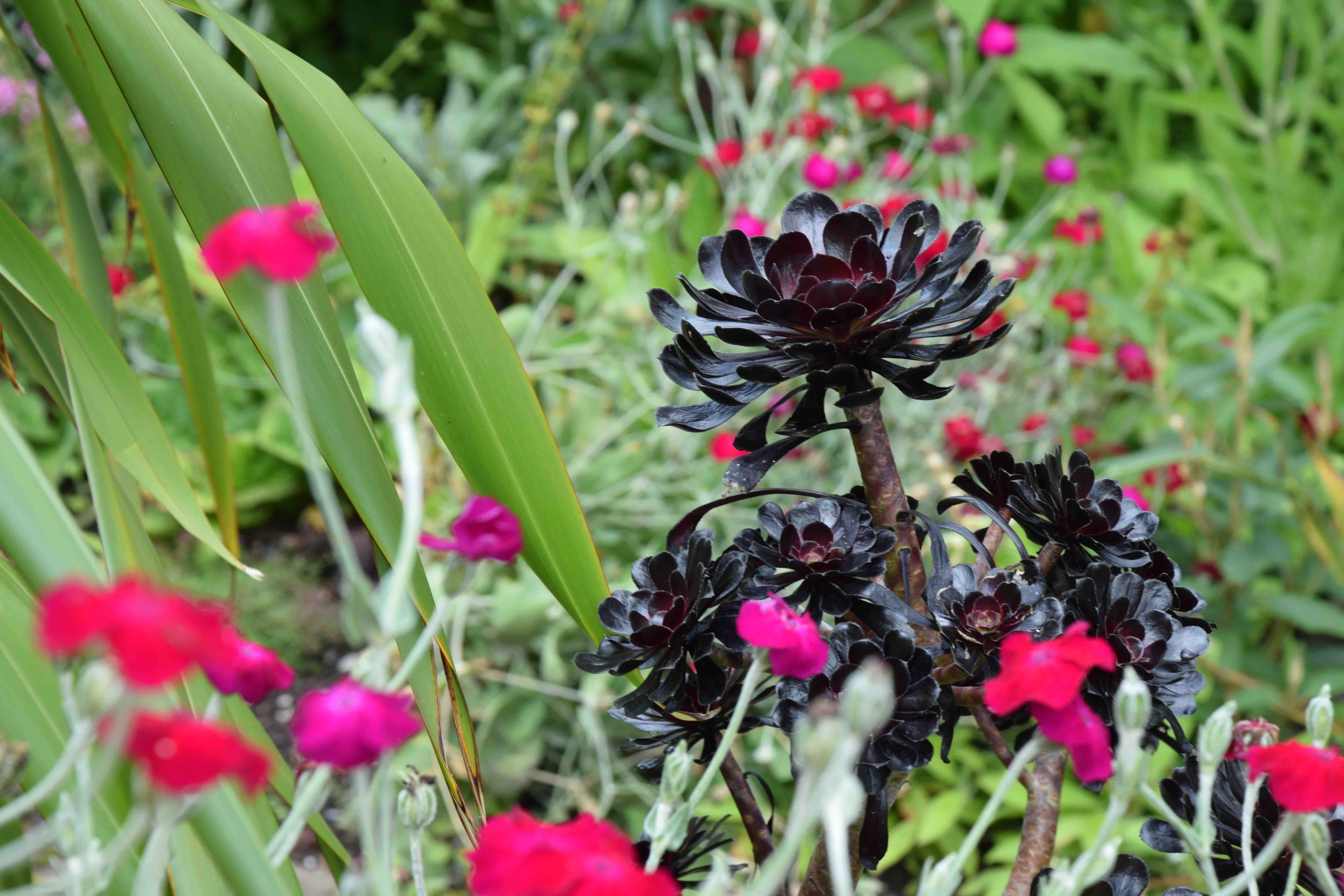
Aeoniums, which all come from the Canary Islands, will be killed by frost so must be put indoors in winter. Recently, Semponiums have been bred and these are a cross between aeoniums and sempervivums. They look like aeoniums but they will tolerate a light frost. They are only just appearing in garden centres so look out for them at Nag’s Hall in spring or with the houseplants this winter.
What to do this week
Plant shrubs and trees
If the soil is not too wet, this is a great time to plant trees and shrubs. Prepare the planting holes well, mixing in garden compost or planting compost. There is no need to add fertiliser at this time of year.
Spruce up patio pots
Plant some bright patio pots. Nags Hall have lots of violas and cyclamen for lashings of colour and small evergreen shrubs for structure.
Protect veg
Cover brassicas like kale and cabbages with netting to keep pigeons off. Cover with fleece to protect them from frost to keep them in better condition. Dig up carrots and parsnips ready for Christmas and store them in compost in the shed to keep them moist and fresh.
Houseplants
Reduce watering of most houseplants now but do not let them dry out completely. Plant hippeastrum (amaryllis) for flowers in the New Year.